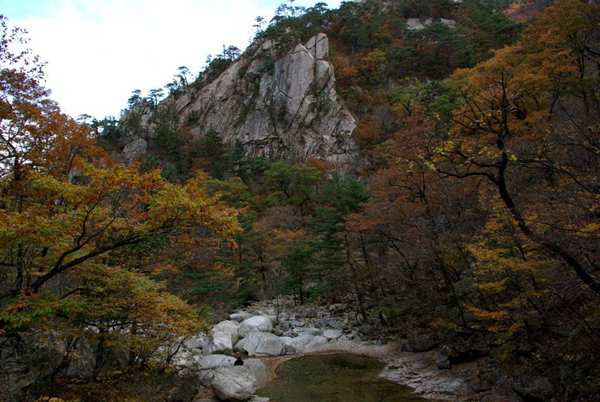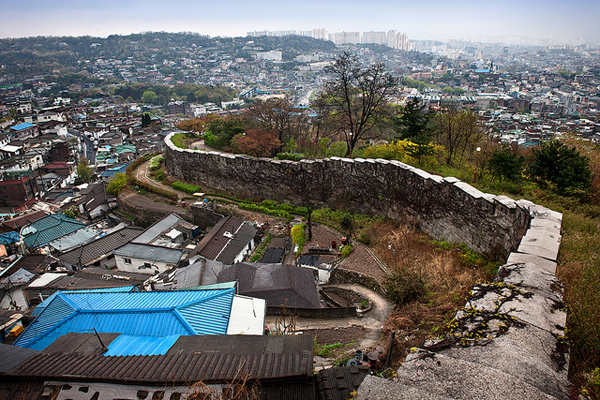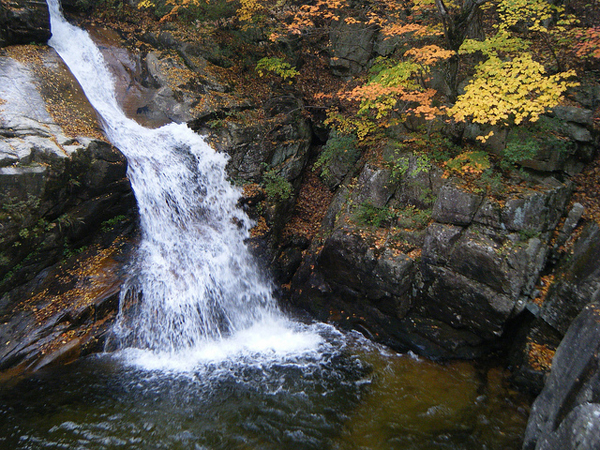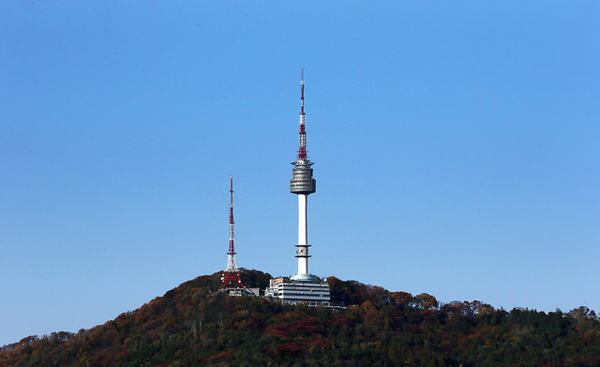It is often said that hiking is South Korea’s national pastime, which makes sense considering around 70 percent of the country is rippled with hills and mountains. Year-round queues form on the trails that lead to Korea’s highest summits, but no season is more popular than fall. As the country’s foliage turns to sunset hues, Koreans and travelers pack their knapsacks and head for the hills. These are seven of the best hikes to take this autumn in Korea. The trees typically put on their best show between October and November, so you have plenty of time to plan accordingly.
1. Seoraksan National Park
Gangwon Province

Image by Lauren Kilberg
Seoraksan National Park, one of Korea’s most dramatic landscapes, looks particularly stunning during fall when the park’s jagged peaks cut through the fiery foliage. At just over 63 square miles, Seoraksan has plenty of hiking trails of varying difficulty to offer. While you’ll be tempted to keep your gaze upwards at the trees, keep an eye out for wildlife as well. The park is home to more than 2,000 animal species, including Asian black bears and goral. At 5,604 feet, Daecheongbong is Seoraksan’s highest peak and wholly worth attempting to climb, if not for the views than most certainly for the bragging rights. The hike is difficult and takes a full day to complete if ramen and soju breaks don’t slow you down.
2. Gwanaksan
Seoul
You can hop straight from the subway to the trailheads of Gwanaksan Mountain (pictured at top) located in southern Seoul. It’s because of the popularity of urban mountains like this one that it’s not uncommon to see Seoul subway riders adorned in full hiking gear. The mountain’s summit is home to Wongaksa Temple and Yeonjuam Hermitage. The latter of which is perched precariously on the edge of a cliff overlooking the ridges and forests of the surrounding area. Once you reach the top (about four hours), you’ll also be able to look down on Seoul’s Gangnam district for a much different perspective than presented in Psy’s famous music video.
3. Jirisan National Park
Gyeongnam, Jeonnam and Jeonbuk Provinces

Photo by Lauren Kilberg
Jirisan National Park, at 182 square miles and spanning three Korean provinces, is the largest mountainous national park in the country. A wildly popular destination, it houses nearly 5,000 plant and animal species, an abundance of hiking trails, as well as Hwaeomsa Temple. Cheonwangbong, the park’s highest peak at 6,284 feet, offers breathtaking views of the surround ridges and tree cover on a clear day.
4. Seoul Fortress
Seoul

Photo by jongwoo park, CC BY-NC-ND 2.0
Circumnavigating Seoul Fortress is one of the most unique hikes you can take in Korea. The more than 600-year-old wall lets you walk through history as you pass a variety sites (and sights). It’s officially just over 11 miles around, but many hike the fortress in smaller sections and leave plenty of time to explore the various gates and outposts along the way. From Bukaksan peak (1,122 feet) you’ll be able to peer down on the blue roof of Korea’s presidential palace (not pictured), which will explain the heavy presence of guards you’re likely to see while hiking. Start at Waryong Park, which is a short distance before the Sukjeongmun rest area. Here you’ll be required to register (passport required) at the office before continuing on.
5. Odaesan National Park
Gangwon Province

Photo by garycycles, CC BY 2.0
As home to Korea’s largest natural woods, Odaesan National Park is a prime fall hiking destination. More than 1,000 plant species can be found here, giving you plenty to look at before reaching the top of the park’s highest peak. There are several courses that take up the 5,127-foot Birobong, which range from an average of two to seven hours roundtrip.
6. Bukhansan National Park
Seoul

Photo by Seongbin Im, CC BY-SA 2.0
Bukhansan National Park is a 48-mile-wide park in northern Seoul where the skyscrapers give way to granite peaks. Baegunbong, Seoul’s highest peak, is located within the park. It’s a daunting 3,083-foot challenge and, depending on your chosen route, requires steep inclines and seemingly endless stairs before reaching the top. The views, however, are worth every punishing step toward the summit. The course to the top takes an average of seven hours roundtrip, but there are other options for the leisure hiker, including routes that bring you by some of the park’s 100 Buddhist temples. Disclaimer: Bukhansan holds the Guinness World Record as the most visited national park per unit area and fall is one of its most popular times. Prepare to wait in queues as you make your way up portions of the mountain.
7. Namsan Park
Seoul

Photo by Republic of Korea, CC BY-SA 2.0
If summiting Korea’s higher peaks isn’t your ideal way to experience the country’s fall foliage, head to Namsan Park. Not only is it Seoul’s largest park, it’s also home to Mt. Namsan and the landmark N Seoul Tower. The views from atop the nearly 800-foot Mt. Namsan aren’t to be missed. The trails leading there ascend gradually and are a manageable feat (about 45 minutes). An alternative and easier option is to ride the cable car, which drops you near the base of the tower. Catch the elevator to the top of the tower and you’ll be rewarded with unobstructed panoramic views of Seoul. To really take in the foliage, at least opt to walk the trails back down to the park’s base.
Paste Travel’s Bucket List columnist Lauren Kilberg is a Chicago-based freelance writer. Her travels have found her camping near the Pakistani border of India and conquering volcanoes in the Philippines.